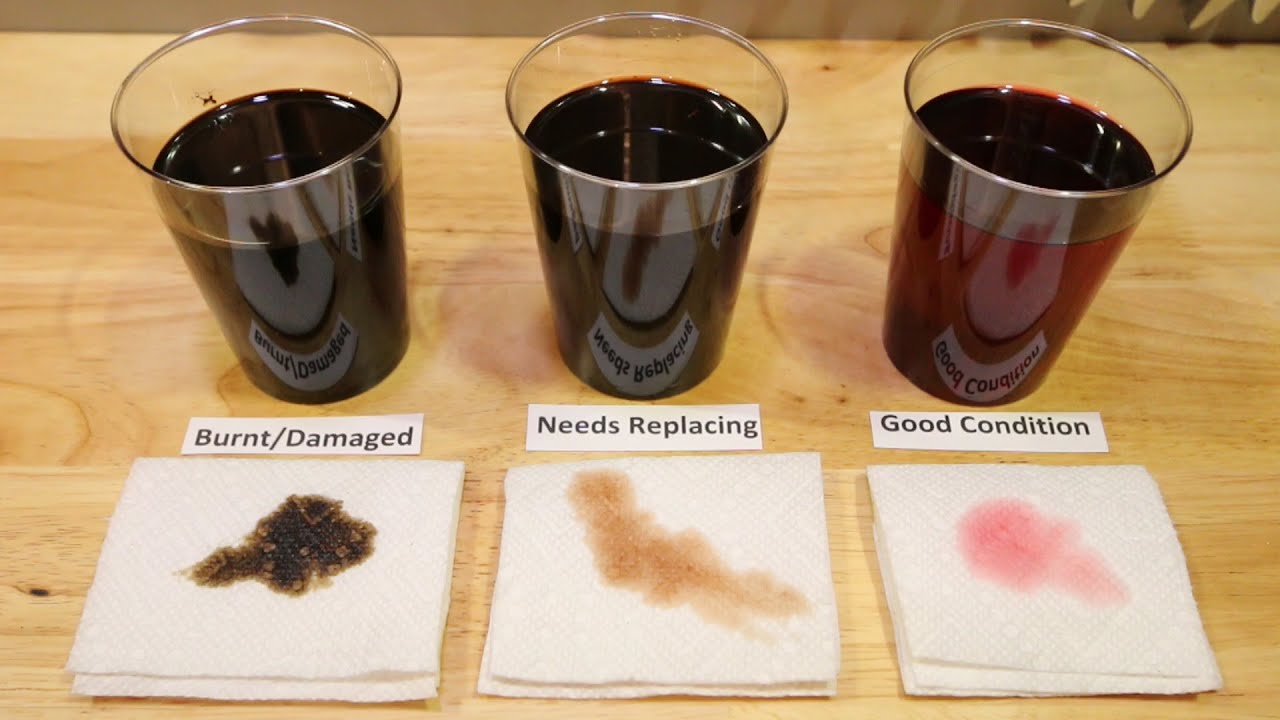Changing transmission fluid is essential for maintaining your vehicle’s performance, and it should be done at least every two years. There are several signs that indicate when you need to change the fluid in your car’s transmission. First, check the owner’s manual as each manufacturer may have a different recommendation on how often this needs to be done.
Next, listen for any strange noises coming from the engine or transmission while driving; grinding, whining or humming sounds could be an indication that something isn’t working properly and could mean it’s time to change out the fluid. You can also look at its color; if it appears dark or burnt smelling then you should definitely replace it with new fluid. Finally, pay attention to shifting changes; if there is hesitation or difficulty when shifting gears then this too could signal that its time for a new batch of transmission oil.
One of the most important components of your vehicle is its transmission, so it’s essential to keep an eye out for signs that you need to change your transmission fluid. If you notice any unusual changes in the way your car shifts or if it starts making strange noises when shifting, then these could be signs that you need to have your transmission fluid changed. Additionally, if there’s a burning smell coming from underneath your hood or if the fluid appears dark and dirty, then this could also indicate that it’s time for a transmission fluid change.
Should I Change My Transmission Fluid?
When to Change Transmission Fluid
Regularly changing your vehicle’s transmission fluid is an important part of maintaining its overall health. The best rule of thumb is to change the fluid every 30,000 miles or every two years, whichever comes first. If you drive under more severe conditions (e.g., frequent stop-and-go traffic or extreme temperatures), then it may be necessary to change the fluid more often.
Be sure to consult with your owner’s manual for specific instructions on when and how to properly change the transmission fluid in your particular car model.
Signs of Low Transmission Fluid Automatic
Low transmission fluid can cause a variety of issues in an automatic vehicle. The most common signs of low transmission fluid include difficulty shifting between gears, delayed responses when shifting, slipping gears, and strange noises coming from the engine or transmission. Additionally, if your car is leaking fluid from the transmission it could be another sign of low levels.
Lastly, if you notice that the check engine light or some other warning lights are illuminated on your dashboard it could be due to insufficient levels of automatic transmission fluid.
Does Changing Transmission Fluid Help Shifting
Regularly changing your vehicle’s transmission fluid can help improve the shifting performance. It works by removing dirt and debris that can build up over time, preventing them from causing damage to the gears in the transmission system. Changing your transmission fluid also helps lubricate all of its components, reducing friction and helping ensure smoother operation.
By doing this regularly as part of a maintenance routine, you may be able to prevent costly repairs down the road.
How Many Years Does Transmission Fluid Last
Transmission fluid typically lasts between 30,000 and 60,000 miles. However, if you drive in stop-and-go traffic or towing a trailer often, the transmission fluid may need to be changed more frequently. It is always wise to consult your vehicle’s owner’s manual for specific information about your car’s maintenance needs as this will vary from make and model.

Credit: www.mobil.com
How Do I Know If My Transmission Fluid Needs Replacing?
If your vehicle is having difficulty shifting gears or hesitating when accelerating, it may be a sign that you need to replace your transmission fluid. Additionally, if the car is making unusual noises such as whining or buzzing while in neutral gear or moving through gears, this could also indicate a need for new fluid. You should also look out for any leaks from around the transmission area which can be an indication of low fluid levels and potential damage to seals and gaskets.
Finally, checking the colour of your transmission fluid on a regular basis will help you determine whether it needs replacing – if the colour has gone dark brown or black instead of its usual red hue then this means that there are high levels of contaminants present in the old oil and it should be replaced as soon as possible.
What are the Symptoms of Dirty Transmission Fluid?
Dirty transmission fluid is one of the most common causes of transmission problems and can manifest itself in a variety of ways. Some of the most common symptoms include slipping gears, delayed gear engagement after shifting, increased noise from the transmission while driving, poor fuel economy, and an overall decrease in performance. Additionally, you may also notice that your car has trouble shifting into higher or lower gears or takes longer than usual to shift between gears.
If any of these symptoms are present it may be indicative of dirty transmission fluid and should be addressed immediately as further damage could result if left unchecked.
What Happens If U Dont Change Transmission Fluid?
If you don’t change your transmission fluid, it can lead to a variety of problems. Over time, the fluid will become contaminated with dirt and debris that can clog passages or reduce its lubricating properties. This can cause increased wear on the internal components of the transmission, resulting in decreased performance and possible failure.
Additionally, if you don’t replace old fluid with new clean fluid, it won’t be able to properly transfer heat away from those same internal parts; leading to dangerous levels of heat buildup and potential damage due to overheating. Finally, not changing your transmission fluid regularly means that any existing contaminants in the system are more likely to remain there without being removed; this could result in further issues down the road if they’re allowed to build up over time.
Will Changing Transmission Fluid Help Shifting?
Changing transmission fluid can help improve shifting. The main purpose of changing the transmission fluid is to keep your car’s internal components clean and lubricated. Over time, the fluids can become contaminated with dirt, debris, and other particles that can cause issues in how your vehicle shifts gears.
By replacing this fluid regularly (as recommended by your manufacturer) you will be able to reduce wear on parts while also improving the overall performance of your vehicle’s shifting capabilities. Aside from simply swapping out old for new fluids, some mechanics may recommend flushing the system or performing a complete overhaul which includes cleaning out any built-up deposits that have accumulated in your transmission over time.
Conclusion
Overall, changing transmission fluid is an important maintenance task for any vehicle. Not only does it help keep the car running smoothly, but it also helps prolong the life of the transmission and ensure that your car runs efficiently. By being aware of the signs to look for when needing a transmission fluid change, you can be sure that your car will stay in great condition and get you from point A to point B safely.



